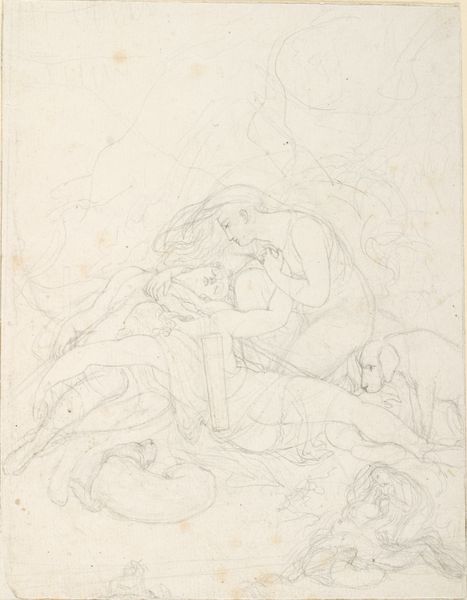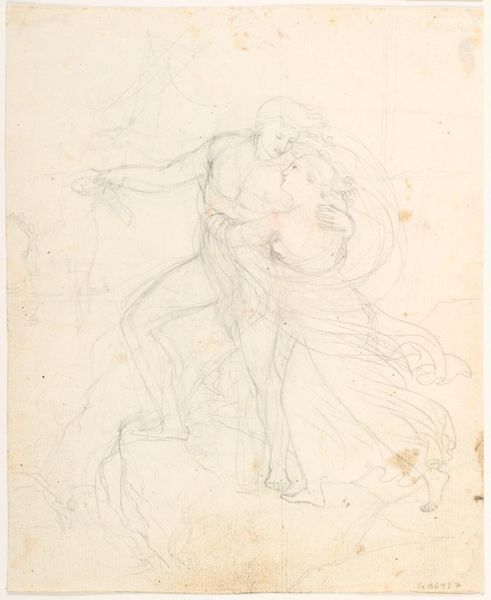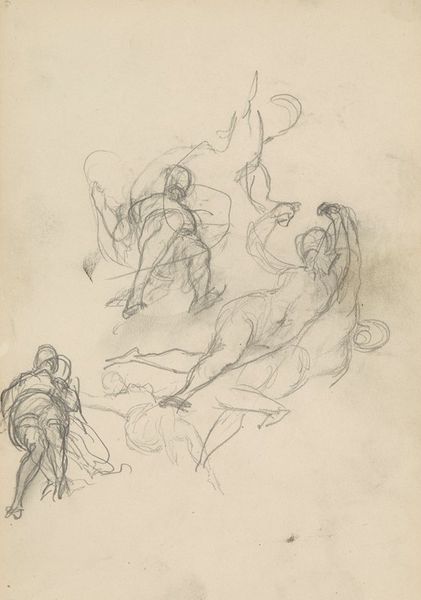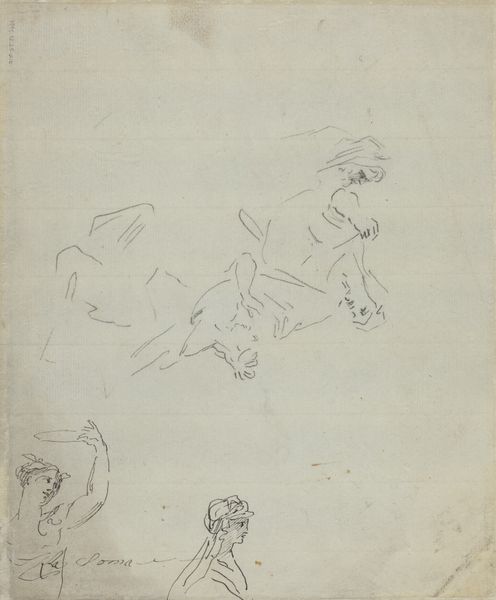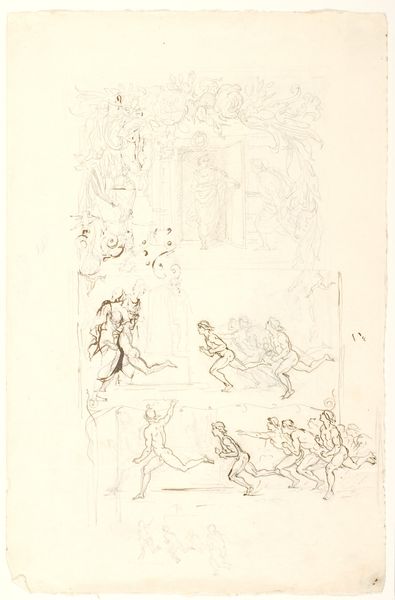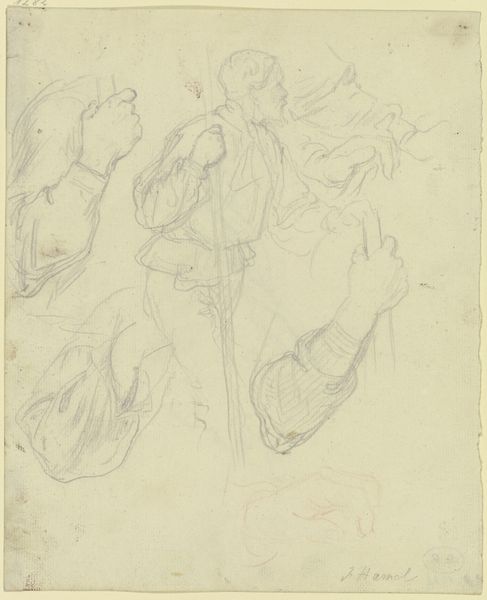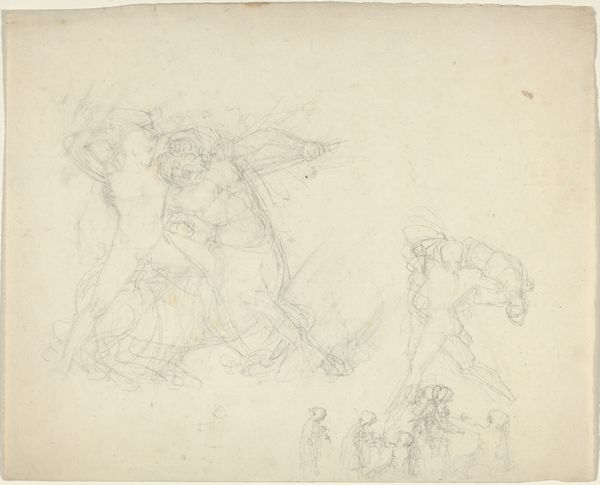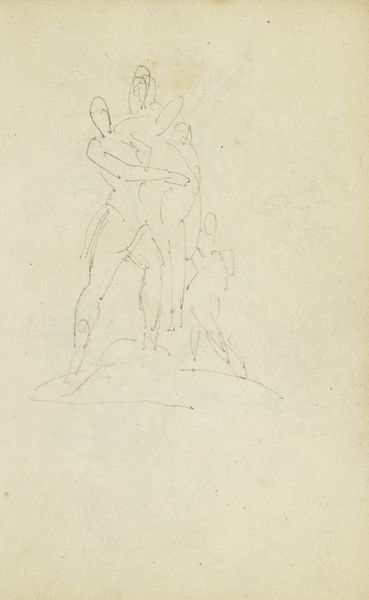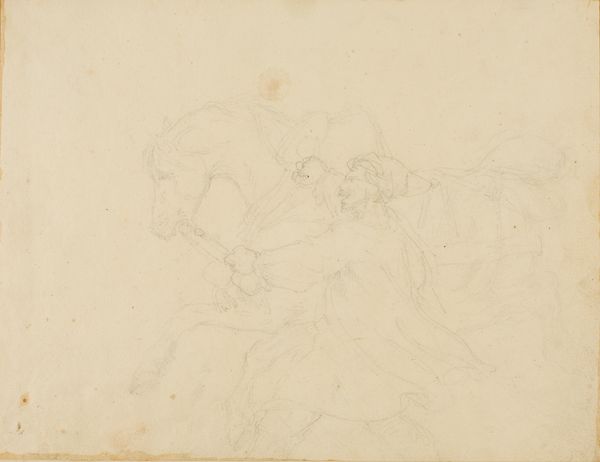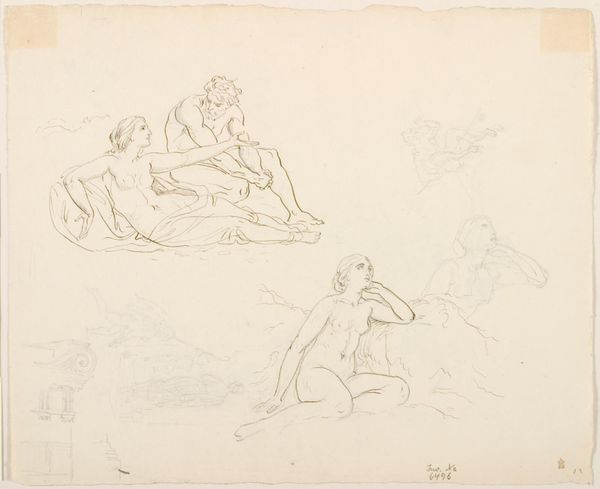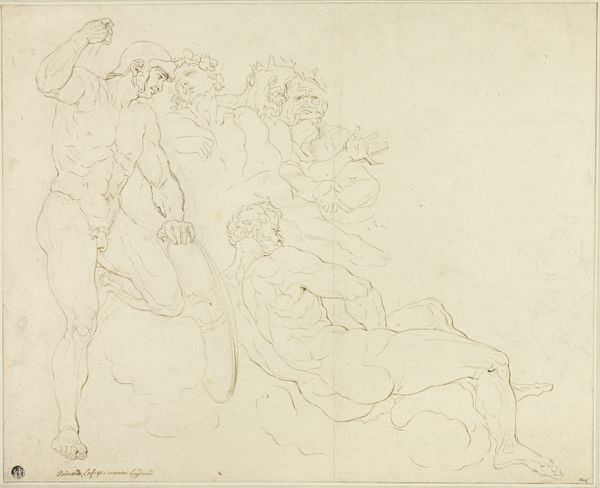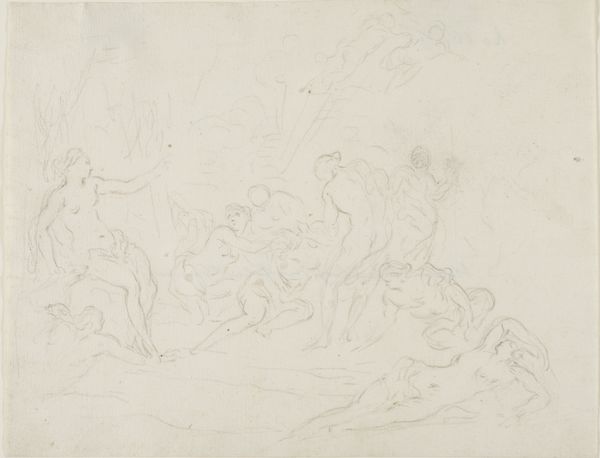
drawing, print, paper, ink, graphite, pen
#
portrait
#
drawing
# print
#
pencil sketch
#
figuration
#
paper
#
ink
#
graphite
#
pen
Dimensions: 250 × 186 mm
Copyright: Public Domain
Editor: We’re looking at “Praying Virgin and Figures in Clouds” by Raymond de Lafage. It’s a drawing using pen, ink, graphite, and pencil on paper. The ethereal quality is striking—it feels both heavenly and very human because it's a sketch. What historical context illuminates this drawing for you? Curator: Considering the socio-political climate often influencing artistic production, the portrayal of religious figures like the Virgin becomes quite telling. Images of the Virgin, especially in postures of prayer or supplication, have historically served as powerful visual tools. They project an image of piety and humility, subtly reinforcing certain societal expectations around female virtue. What kind of public role could this art have played? Editor: I suppose in a church, or displayed somewhere to set an example? Does the medium – being a drawing – change that role? Curator: Precisely! A drawing, unlike a finished painting destined for public display, often functions as a preparatory sketch. But what if, in itself, it was shared? This raises interesting questions about the intention behind its creation and circulation. Was it meant as a preliminary study, later deemed worthy of preservation, or could it have circulated among a select group as an intimate devotional aid? Editor: That makes me wonder about the role of art as both a public declaration and a private experience. Curator: Exactly. And the politics of imagery become incredibly layered. It allows one to consider not only its ostensible religious theme, but also the subtle ways art could both reinforce and potentially challenge the prevailing norms of the time, or reflect the cultural consumption of the patrons. How do you feel about the message of this art from a historical perspective? Editor: I initially saw only a peaceful religious scene, but now I appreciate how it's a record of an historical environment and a product of social expectations. It gives a completely new point of view.
Comments
No comments
Be the first to comment and join the conversation on the ultimate creative platform.
